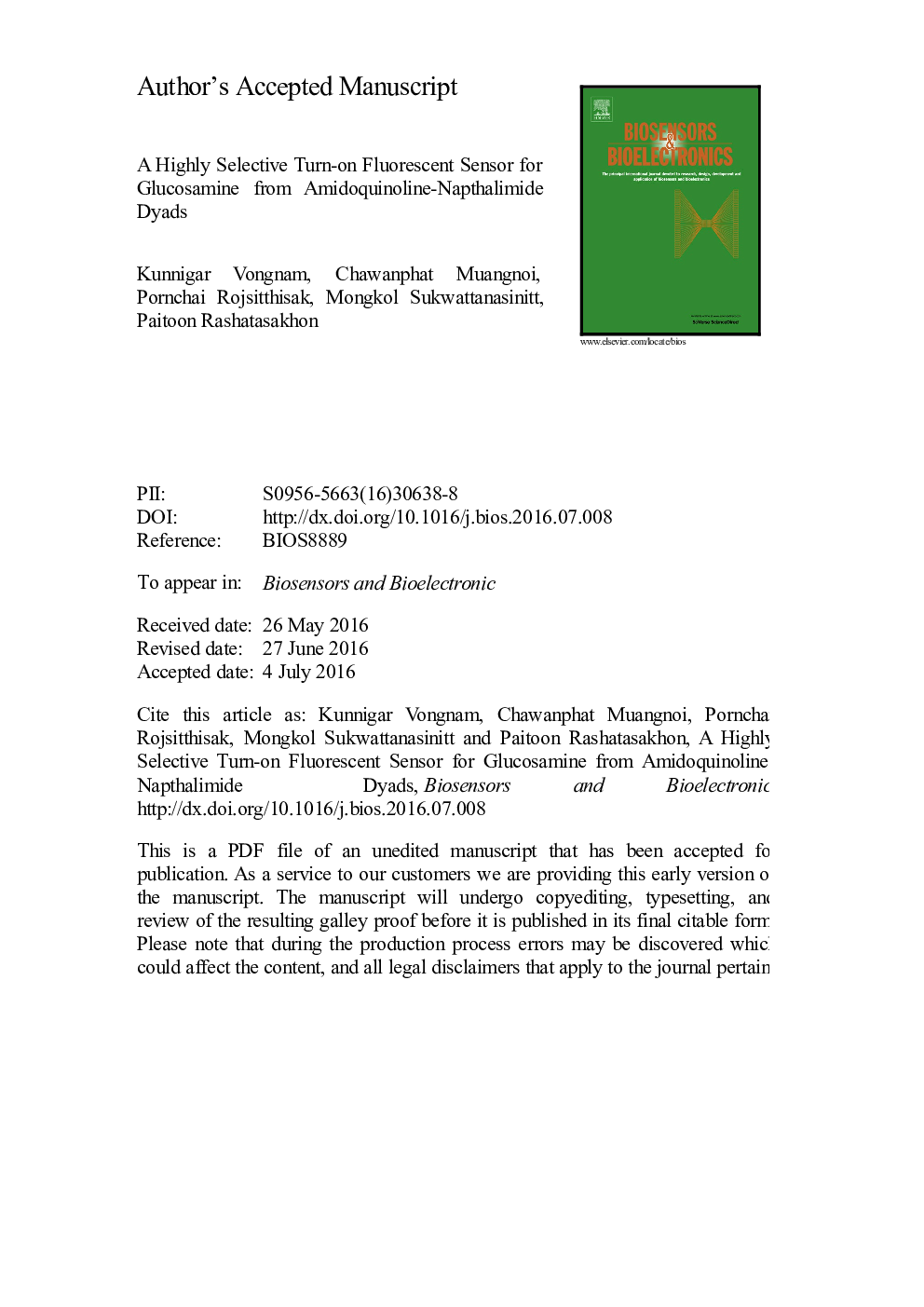| Article ID | Journal | Published Year | Pages | File Type |
|---|---|---|---|---|
| 7230207 | Biosensors and Bioelectronics | 2016 | 15 Pages |
Abstract
Three amidoquinoline-naphthalimide dyads are designed and synthesized in 67-73% overall yields in 3 steps from commercially available starting materials. Compounds with unsubstituted and nitro naphthalimide (1 and 2) show excellent selective fluorescent responses towards glucosamine with the enhancement of fluorescence quantum yields by 14 folds. The determination of HOMO-LUMO levels by linear sweep voltammetry suggests that the sensing mechanism likely involves the inhibition of photo-induced electron transfer (PET) between the aminoquinoline and naphthalimide moieties by glucosamine. The association constants of 1.55Ã104 and 1.45Ã104 Mâ1, along with the glucosamine detection limits of 1.06 and 0.29 µM are determined for 1 and 2, respectively. The application of 2 as a fluorescent probe for real-time detection of cellular glucosamine at micromolar level in living Caco-2 cells is also demonstrated.
Related Topics
Physical Sciences and Engineering
Chemistry
Analytical Chemistry
Authors
Kunnigar Vongnam, Chawanphat Muangnoi, Pornchai Rojsitthisak, Mongkol Sukwattanasinitt, Paitoon Rashatasakhon,
